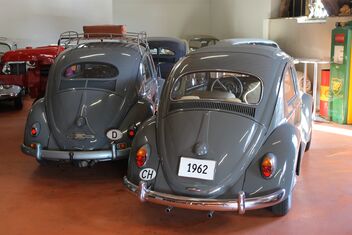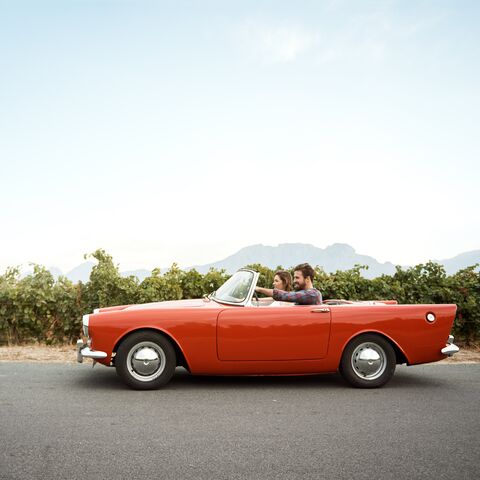
Winterizing vintage cars: ten tips from the experts
Plunging temperatures signal the end of this year's vintage car season: winterization is imminent. What do you need to take into consideration here? These ten tips for caring for your classic car will help it survive the winter unscathed. And for the worst-case scenario, there's AXA classic car and vintage motor vehicle insurance.
You've gone for your last spin and now you want to prepare your classic car as well as possible for the winter break? It's worth storing it properly, as a claim can quickly become expensive. We've consulted Urs Weibel, vintage car specialist at autoweibel ag, and are passing on his valuable tips to you so that your precious gem can come through the winter safely.
Ten expert tips on how to winterize your vintage car properly
1. Clean and dry prior to storage
Care is the key for any vintage car, especially before storing it over winter. Bird droppings, insects and dirt can eat into the paintwork. Any grime on the underside and wheel housings should be removed. It's important for everything to be completely dry after cleaning, leaving your favorite piece clean and ready to drive in the spring.
2. Jack up your vehicle or inflate the tires
If possible, you should jack up your vehicle of course, as this takes the most pressure off the tires. Otherwise it's important to inflate the tires so that there's no space beneath them. This can prevent flat spots.
3. Disconnect battery
For safety reasons, you should disconnect the battery as it runs down quicker in the cold. In the worst case, the toxic acid would seep out of the battery and cause damage. You should therefore take the battery out of a vintage car, store it in a warm place and recharge it from time to time.
4. Treat seals
You should use silicone to treat all visible rubber seals in the trunk, on the doors or engine hood so that the rubber stays smooth. Note: Convertibles often have additional seals on the roof.


5. Cover it properly
Covering your beloved vehicle doesn't normally do any harm. It's important that moisture doesn't build up under the hood (see point 1 - your vintage car should be dry before being stored). Covering a canvas-roofed convertible can be particularly tricky, as moisture can quickly build up here and lead to irreparable damage.
6. Perfect parking space
The place where you store your vintage vehicle does not need to be heated - it's more important for it to be dry. This also applies to a shelter (open carport) if the vintage car is well covered and protected against snow and ice. In this case, it's important for you to have enough anti-freeze in the engine coolant to protect against below-zero temperatures.
7. Fill tank properly
It’s all about the perfect amount. The tank should never be underfilled, otherwise this creates condensation. But overfilling the tank can result in expanding gasoline overflowing.
8. Do not engage the brakes
Never apply the handbrake, as it could seize up. Brakes in a poor condition could also get stuck. You should therefore always check the condition of the brakes before storing the vehicle. If the brakes have seized up, a full brake inspection must be carried out. Tip: Secure your vintage car with a wedge if it's parked on a slope.
9. Does the oil need to be changed?
Opinions differ on this topic. One is that you should only do this in the spring before its first outing and winterize the vehicle with the "old motor oil". Another is that you should replace the engine oil before winterization to prevent corrosion from condensation and acids in the oil.
10. Final check
Double-check whether you have followed all points and ensure that there are no drops of moisture on your beloved vehicle. Everything OK? Then your vintage car is ready for the winter.
autoweibel ag: real vintage car experts
Specializing in VW vintage cars, autoweibel ag is now managed by the third generation. This means that the 60-year old company has a great deal of experience, knowledge and passion. Urs Weibel and his brother Andreas continue to support the younger generation with their expertise. This is because what are today classified as vintage cars were still "normal" cars when they were apprentices. Urs Weibel got the vintage car bug when he bought a 1948 VW Beetle from a friend in 1985. Today, autoweibel has the most complete collection of VW Beetles in Switzerland with models ranging from 1948 to 1967.







